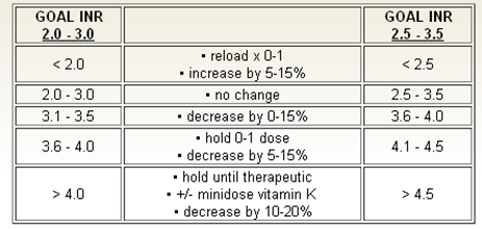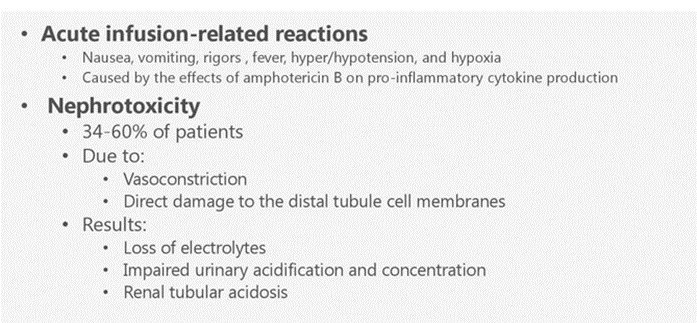A nurse is reviewing the laboratory results of a client who has atrial fibrillation and a prescription for warfarin. After informing the provider that the INR is 2.5, the nurse should expect which of the following prescriptions?
Decrease the dose of the medication.
Increase the dose of the medication.
Withhold the medication.
Administer the current dose of the medication.
The Correct Answer is D
Choice A Reason:
Decrease the dose of the medication is incorrect. Lowering the dose could potentially drop the INR below the therapeutic range, increasing the risk of clot formation.
Choice B Reason:
Increase the dose of the medication is incorrect. Raising the dose might push the INR above the therapeutic range, increasing the risk of bleeding.
Choice C Reason:
Withhold the medication is incorrect. Withholding the medication might lead to inadequate anticoagulation and an increased risk of clot formation.
Choice D Reason:
Administer the current dose of the medication. An INR of 2.5 is within the therapeutic range for many indications, including atrial fibrillation. This means the blood is appropriately anticoagulated to prevent clot formation without an excessive risk of bleeding. In this scenario, maintaining the current dose of warfarin is often appropriate to sustain the desired therapeutic effect.

Nursing Test Bank
Naxlex Comprehensive Predictor Exams
Related Questions
Correct Answer is B
Explanation
Choice A Reason:
Dry cough is incorrect. While cough can be a side effect of amphotericin B, it's not a hallmark sign of an acute infusion reaction.
Choice B Reason:
Fever is correct. Acute infusion reactions to amphotericin B can manifest in various ways, and fever is a common sign indicating an immediate adverse reaction during the infusion. Other potential signs of an acute infusion reaction may include chills, rigors, hypotension, flushing, headache, or nausea.
Choice C Reason:
Pedal edema is incorrect. Swelling of the feet or pedal edema is not a typical manifestation of an acute infusion reaction to amphotericin B.
Choice D Reason:
Hyperglycemia is incorrect. Increased blood glucose levels (hyperglycemia) are not commonly associated with an acute infusion reaction to amphotericin B. However, amphotericin B may have effects on electrolytes and kidney function that could indirectly impact glucose levels.

Correct Answer is B
Explanation
Choice A Reason:
Giving the prescribed dose of clindamycin is not appropriate due to the reported penicillin allergy, which increases the risk of an allergic reaction.
Choice B Reason:
Obtain a prescription for an alternative antibiotic is correct. Given the client's reported allergy to penicillin, which is in the same antibiotic class as clindamycin (both are antibiotics that belong to the beta-lactam group), there is a higher risk of cross-reactivity and potential allergic reaction. Therefore, it's important to avoid administering clindamycin in such cases and seek an alternative antibiotic that does not have a similar chemical structure to penicillin to prevent an allergic reaction.
Choice C Reason:
Premeditating the client with epinephrine before administering the antibiotic is not a standard practice in this context. Epinephrine is used to treat severe allergic reactions but is not used as a preventive measure before administering antibiotics.
Choice D Reason:
Administering the clindamycin using a desensitization schedule might be an option in certain situations under the guidance of an allergist or immunologist, but it's not typically performed by nurses and requires a specific protocol and expertise in managing drug allergies. Obtaining an alternative antibiotic is a more appropriate and immediate action to avoid the risk of an allergic reaction in this scenario.
Whether you are a student looking to ace your exams or a practicing nurse seeking to enhance your expertise , our nursing education contents will empower you with the confidence and competence to make a difference in the lives of patients and become a respected leader in the healthcare field.
Visit Naxlex, invest in your future and unlock endless possibilities with our unparalleled nursing education contents today
Report Wrong Answer on the Current Question
Do you disagree with the answer? If yes, what is your expected answer? Explain.
Kindly be descriptive with the issue you are facing.
